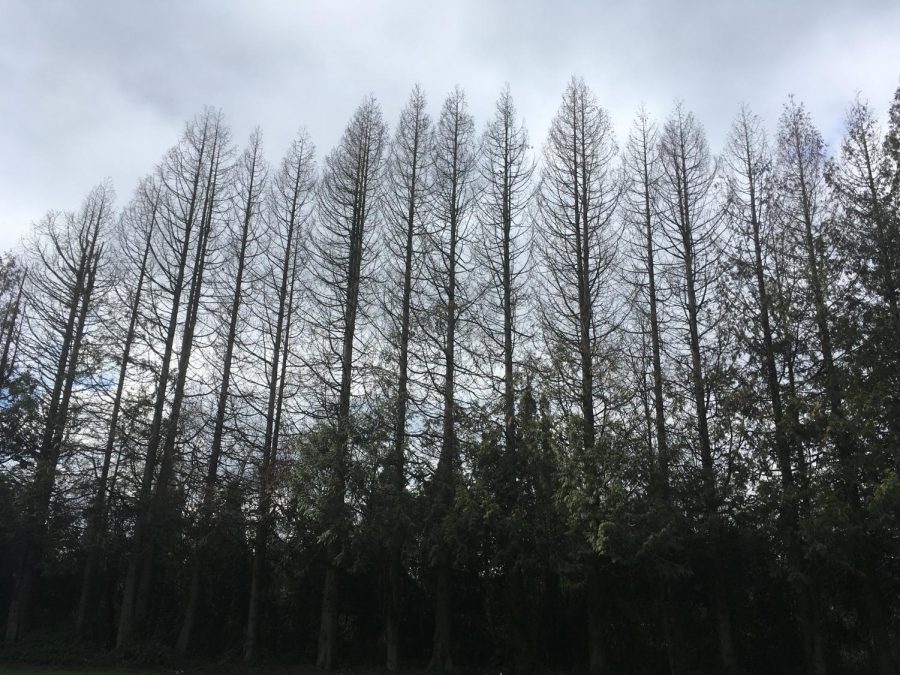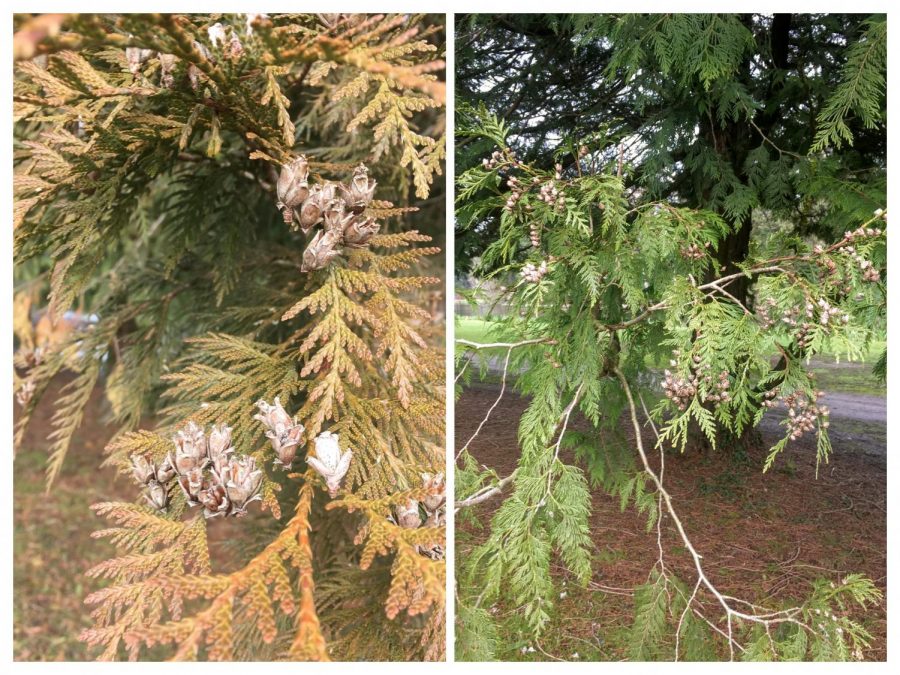Western Deadcedars
Clarion photo Alex Cheriel
A row of dead Western redcedars, separating the 2nd hole at Eastmoreland Golf Course and the Union Pacific railroad.
February 18, 2019
The Western redcedar, a native tree to the Pacific Northwest, is very commonly found in parks, along roads, and in forests. The past few years have seen a concerning increase in deaths of this species across the region as a result of abnormal climate conditions and several other related factors.
Western redcedars grow best in shady environments with ample water. In the Pacific Northwest, they thrive almost anywhere. Unfortunately, recent warm and dry summers have compromised the health of many cedars.
Typically, the city of Portland receives a total of three inches of rainfall in the months of June, July, and August. However, six of the past nine years have seen below-average summer rainfall. The summer of 2017 recorded just 1.14 inches of rain, including a spell of 45 consecutive dry days, and in the summer of 2018 Portland only received only 0.95 inches of rain.
Even though six of the past nine summers have received below-average rainfall, six of the past nine total years have in fact received above-average rainfall. 2016 and 2017 each recorded greater than 50 inches of rain, far above the annual average of 39 inches. Unfortunately, surplus water accumulated during the winter does not carry over into the summer.
In addition to low summer rainfall, above-average temperatures have weakened many cedars. The summer of 2015 was especially grueling; temperatures rose above 90 degrees on 27 different days. While the past three summers have been less harsh, each one has still recorded warmer-than-normal temperatures.
City of Seattle arborist Chris Rippey is studying the decline of Western redcedars. He has concluded that recent warm, dry summers, as a result of climate change, have made these trees easy targets for pests. “As our region is experiencing an increase in warmer nights, our trees are not halting their respiration process and are depleting their carbon resources. The native Western cedar borer is taking advantage of the weakened trees and infesting them to a greater level than previously noted,” he explained.
City of Portland arborist Dylan Saito elaborated on the issue. “These pests can introduce pathogens into the tree, causing death,” he said. “This is concerning for future tree canopy, however we are making appropriate decisions to replace (dead) trees with drought resistant species, and better placement to avoid issues.”
Western redcedars have very thick foliage and make effective barriers. Because of this, they are often planted in a row, very close together, as seen at the Eastmoreland Golf Course. Trees planted in this manner must compete with one another for resources and are not very resilient in the face of abnormal environmental conditions.
“The disease is spread in the root system and because those cedars were planted too close together, if one gets it the rest quickly follow,” said Kathy Hauff, Eastmoreland Golf Course greenskeeper.
Other factors can make Western redcedars susceptible to drought stress as well. Poor soil conditions, steep slopes, and too much direct sunlight can cause trees to not get the amount of water that they need. Cedars in their natural habitat, along creeks and in other low-lying, shady areas in forests are much less likely to perish.
“Western redcedars should not be excluded as a planting choice, but should be more appropriately planted,” Rippey advises. “They should only be planted in shady areas where water is readily available.”
Western redcedars have traditionally grown freely throughout the Pacific Northwest. In today’s changing climate, however, many trees located outside of their preferred habitat are experiencing health problems. When planting trees, it’s essential to research which species will perform best based on the location.












